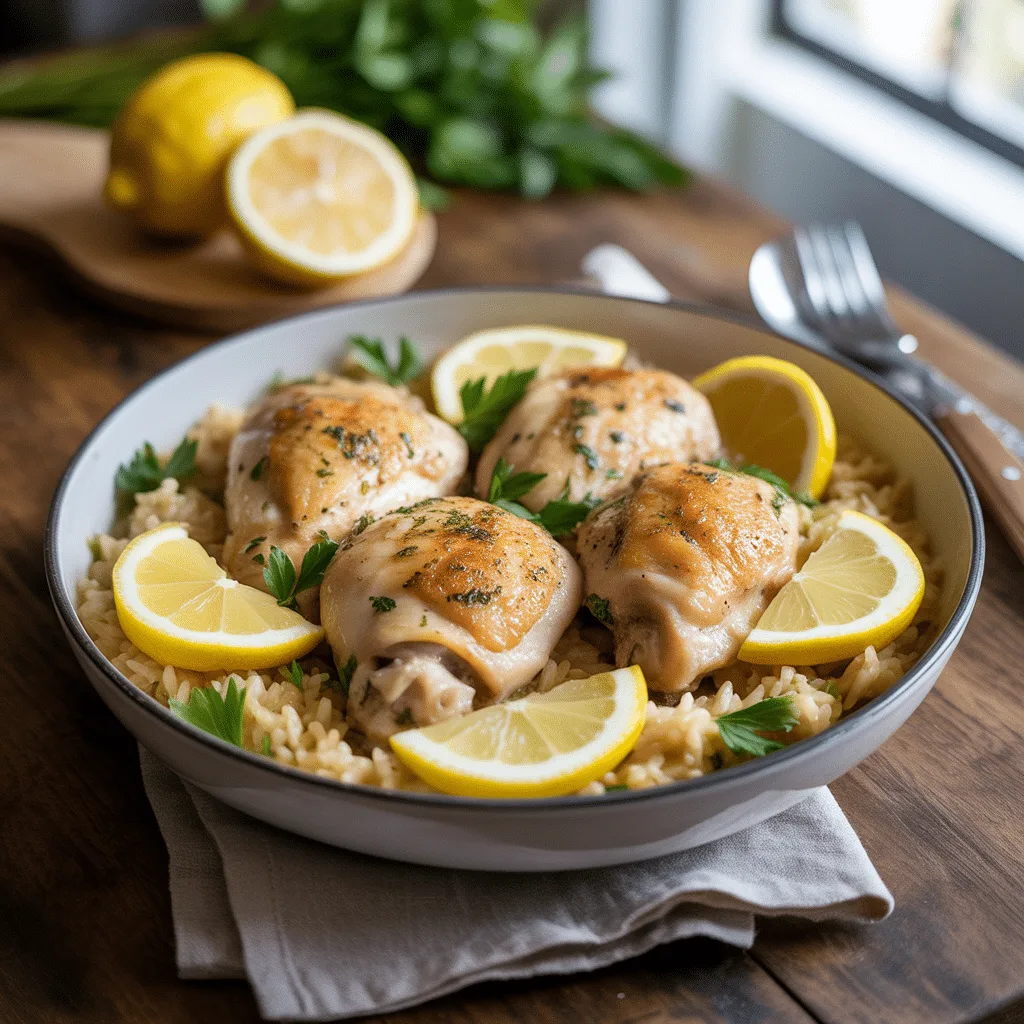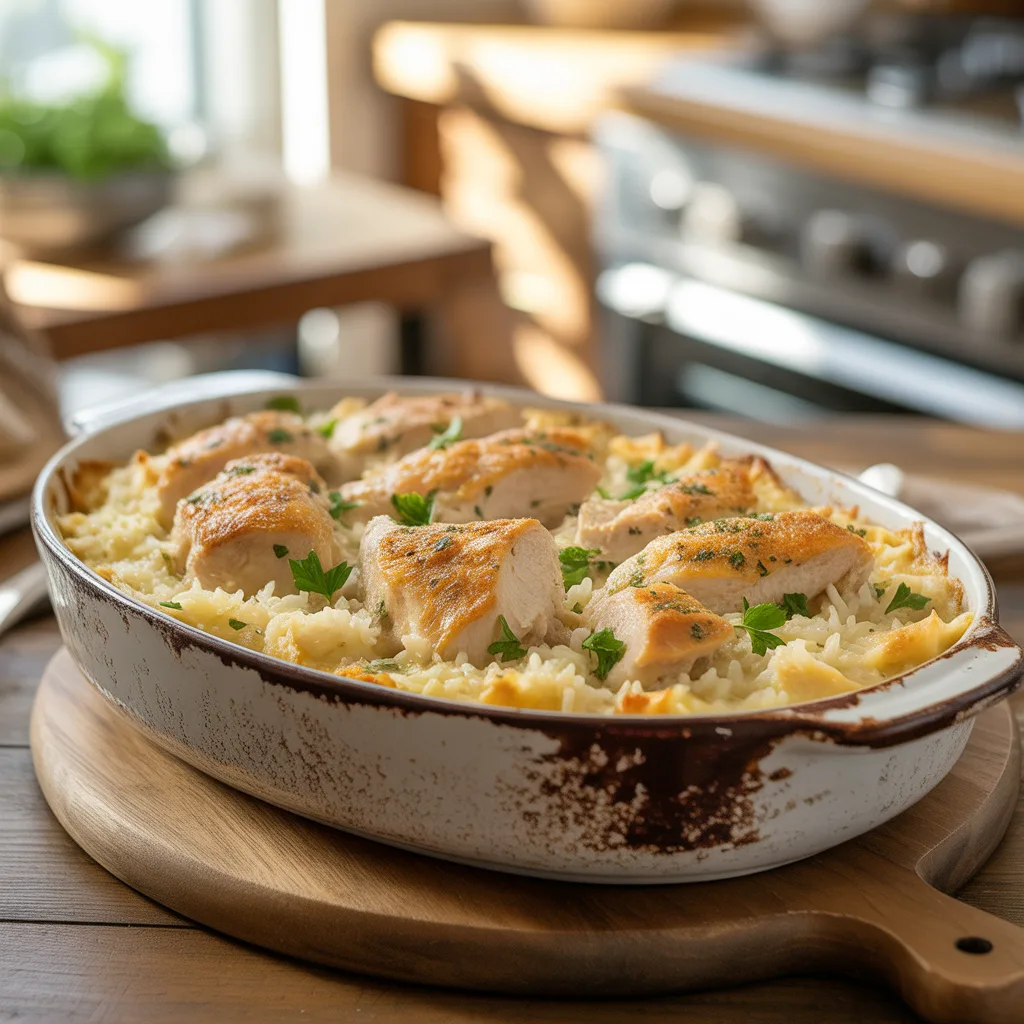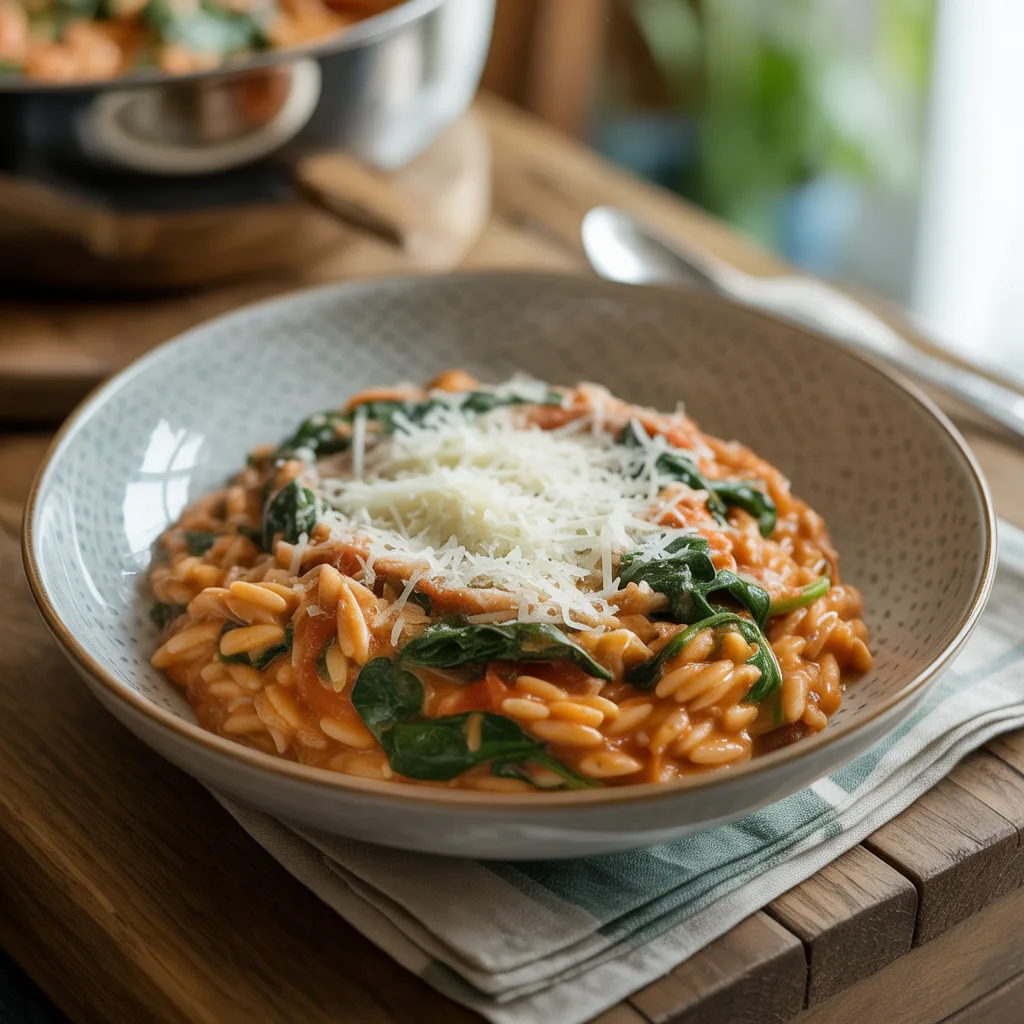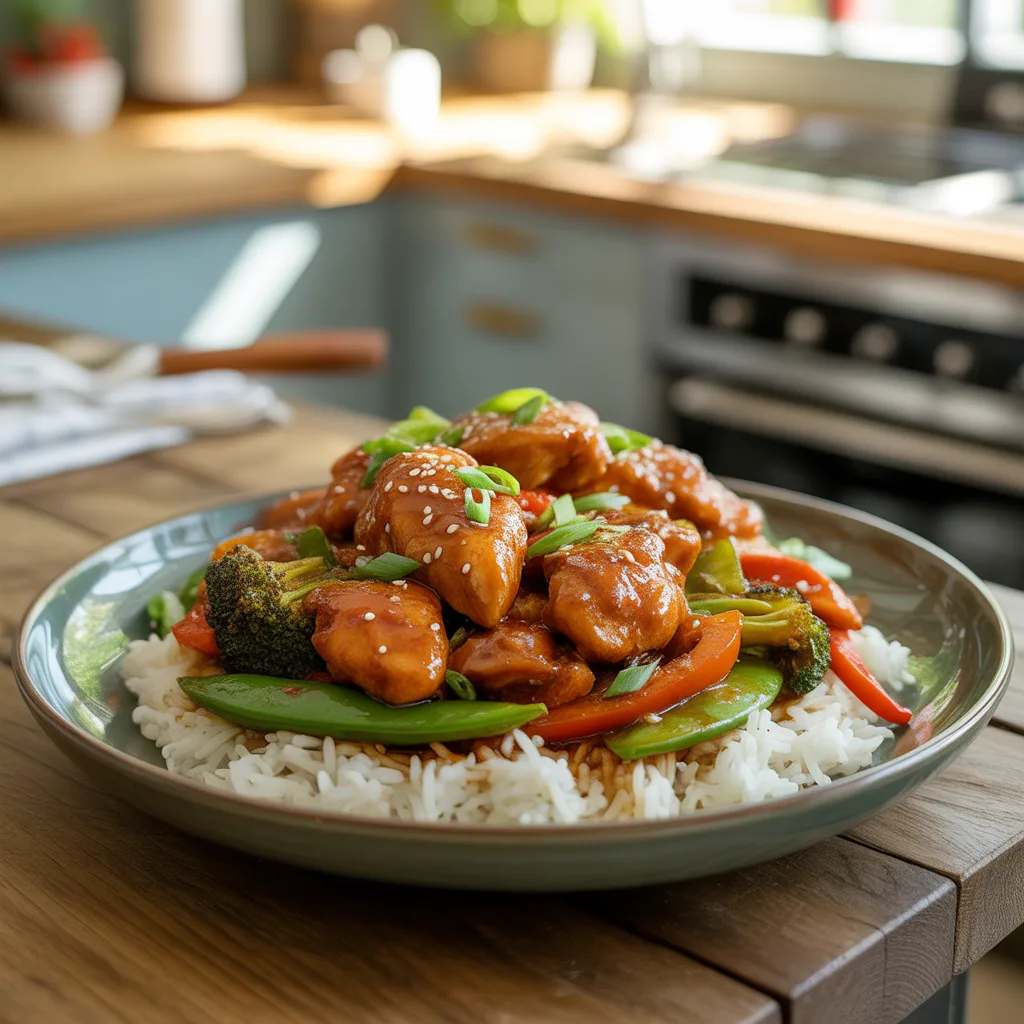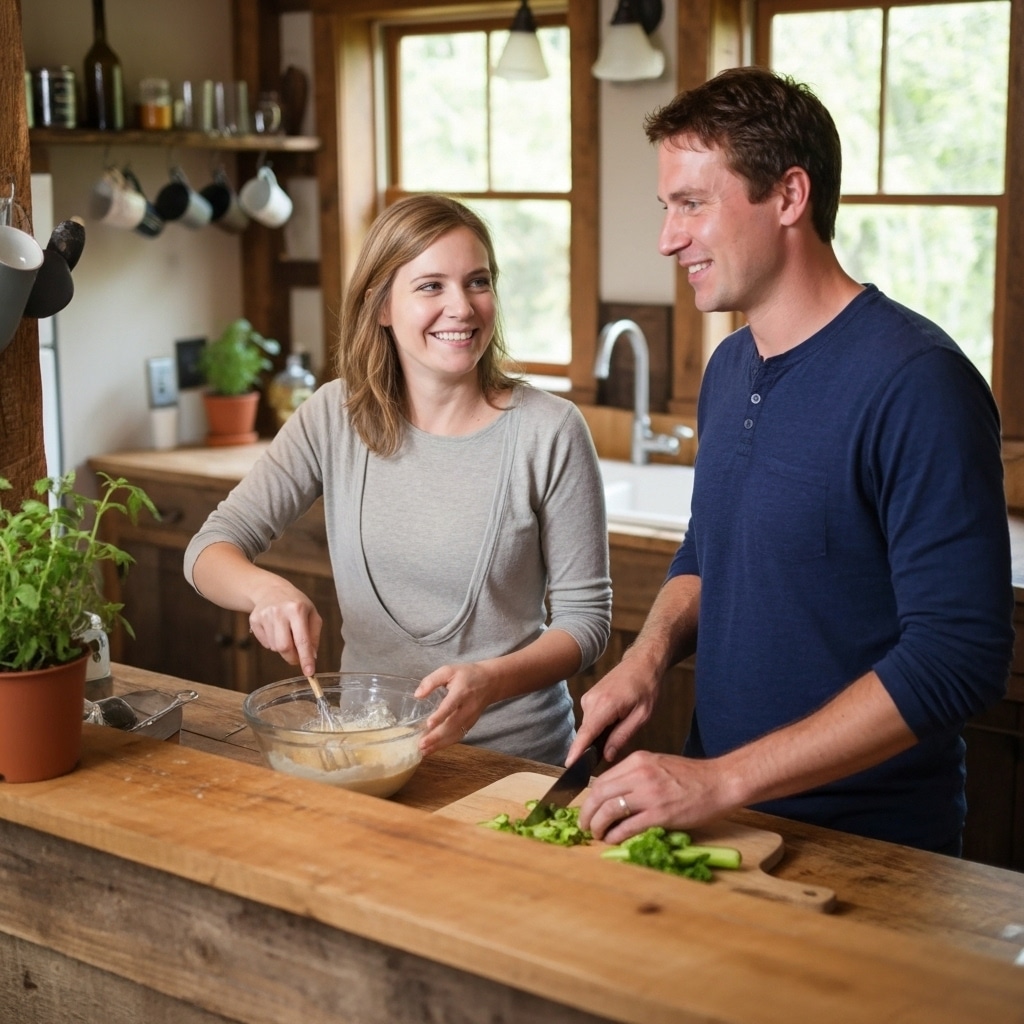Is there anything better than a meal that simmers together, filling your kitchen with the most incredible aromas, and leaves you with just one pot to wash? I didn’t think so. This One-Pot Lemon Herb Chicken and Rice is my go-to on those nights when I want something undeniably delicious without the mountain of dishes. It’s a complete, satisfying meal that feels a little fancy but is built on the simple, honest flavors of lemon, garlic, and fresh herbs. It’s comfort food that doesn’t weigh you down.
Why You’ll Love This
This recipe is a true weeknight warrior. Everything cooks in a single pot, which means you get to spend less time cleaning and more time enjoying your evening. The chicken thighs become incredibly tender and juicy, and as they cook, they infuse the rice with so much flavor. You end up with this beautifully fragrant, fluffy rice and a perfectly cooked protein all at once. So good. It’s the kind of meal that’s so, so comforting and always feels like a reward after a busy day. Plus, it’s a fantastic base recipe that you can easily tweak based on what you have in your fridge.
Ingredients You’ll Need
- 1.5 lbs boneless, skinless chicken thighs: They stay moist and tender through the cooking process.
- 2 tablespoons olive oil: For browning the chicken and building our flavor base.
- 1 yellow onion, diced: Adds a sweet, savory foundation.
- 4 cloves garlic, minced: Because is there ever enough garlic?
- 1 ½ cups long-grain white rice: Like jasmine or basmati, which cooks up fluffy.
- 3 cups chicken broth: Adds depth and savory flavor instead of just water.
- 2 lemons: You’ll need the zest and juice for that bright, sunny flavor.
- 1 teaspoon dried thyme: Or 1 tablespoon fresh, for an herby earthiness.
- 1 teaspoon dried oregano: A classic herb that pairs perfectly with lemon.
- Salt and black pepper: To season everything perfectly.
- ⅓ cup fresh parsley, chopped: For a pop of fresh color and flavor at the end.
Let’s Get Cooking Step by Step
- Pat your chicken thighs completely dry with a paper towel. This is the secret to getting a good, golden sear. Season both sides generously with salt and pepper.
- Heat the olive oil in a large, deep skillet or Dutch oven over medium-high heat. Once the oil is shimmering, add the chicken thighs. Don’t crowd the pan—you might need to do this in two batches. Sear for about 4-5 minutes per side, until you get a beautiful golden-brown crust. They don’t need to be cooked through yet. Remove them to a plate and set aside.
- Reduce the heat to medium. In the same pot, you’ll see all those delicious browned bits from the chicken. Add the diced onion and cook for 3-4 minutes, until it starts to soften. Add the garlic and cook for another minute until fragrant.
- Add the uncooked rice to the pot. Stir it around for about a minute, toasting it lightly in the oil and onion mixture. This little step adds a wonderful nutty flavor to the final dish.
- Pour in the chicken broth, then add the lemon zest, lemon juice, dried thyme, and oregano. Give everything a good stir, scraping the bottom of the pan to loosen all those tasty browned bits. Bring the liquid to a gentle boil.
- Nestle the seared chicken thighs back into the pot, along with any juices that collected on the plate. Reduce the heat to low, cover the pot with a tight-fitting lid, and let it simmer for 20-22 minutes.
- After 20 minutes, check the rice for doneness. The liquid should be absorbed and the rice should be tender. If it’s still a bit firm, cover and cook for another 3-5 minutes. Turn off the heat and let the pot sit, covered, for 5-10 minutes. This allows the rice to steam and become perfectly fluffy.
- Fluff the rice with a fork, stir in the fresh parsley, and serve immediately with extra lemon wedges on the side.
One-Pot Cooking Benefits
Honestly, the one-pot method is a game-changer for busy cooks. First, there’s the obvious: fewer dishes. But beyond that, cooking everything together means the flavors have a chance to mingle and build upon each other. The starches from the rice help thicken the cooking liquid into a light sauce, and the herbs and lemon perfume the entire dish from the bottom up. It’s a more intuitive way to cook, and it almost always results in a deeper, more complex flavor than if you cooked each component separately.
Variations & Substitutions
This recipe is wonderfully flexible. Don’t have chicken thighs? Chicken breasts will work, but be careful not to overcook them. For a different flavor profile, try this method with my Grilled Ranch Garlic Parmesan Chicken Skewers—just chop the cooked skewered chicken and stir it into the cooked rice at the end. Vegetarian? Swap the chicken for a can of drained chickpeas and use vegetable broth. Out of fresh lemon? A tablespoon of white wine vinegar or even a dash of balsamic vinegar can provide a similar bright acidity. And if you’re browsing other chicken dinner recipes, remember this technique works with almost any herb combination you love.
Tips For Success
- Don’t skip the step of patting the chicken dry. A wet chicken will steam instead of sear.
- Use a pot with a heavy, tight-fitting lid. This ensures the steam stays in and cooks the rice evenly.
- Resist the urge to peek under the lid while the rice is cooking! Lifting the lid lets out precious steam.
- That rest time at the end is not a suggestion. It’s crucial for fluffy, not gummy, rice.
- If you love a little more texture, stir in some toasted pine nuts or slivered almonds right before serving.
- And always taste and season at the end. A little extra squeeze of lemon or pinch of salt can really make it sing.
Storage & Reheating
Let any leftovers cool completely before storing them in an airtight container in the refrigerator. They’ll keep for up to 4 days. To reheat, the stovetop is your best bet. Add a splash of water or broth to a saucepan along with the leftovers, cover, and warm over low heat, stirring occasionally, until heated through. You can also use the microwave, but cover the dish and reheat in 30-second bursts, stirring in between, to avoid drying it out.
Frequently Asked Questions
- Can I use brown rice instead of white? You can, but it will require more liquid and a longer cooking time. I’d suggest using 4 cups of broth and increasing the simmer time to 40-45 minutes. You may need to add the chicken halfway through to prevent it from overcooking.
- My rice is still hard after cooking. What happened? This usually means the heat was too high and the liquid boiled off too quickly before the rice could absorb it. Next time, make sure you’re at a very low simmer. For now, just add a 1/4 cup of hot broth, cover, and cook for another 5-10 minutes.
- Is this similar to other chicken breast recipes? The technique is great for all kinds of chicken dinner recipes, but thighs are more forgiving. If you prefer white meat, use breasts and reduce the initial simmer time to about 15 minutes to keep them from drying out.
